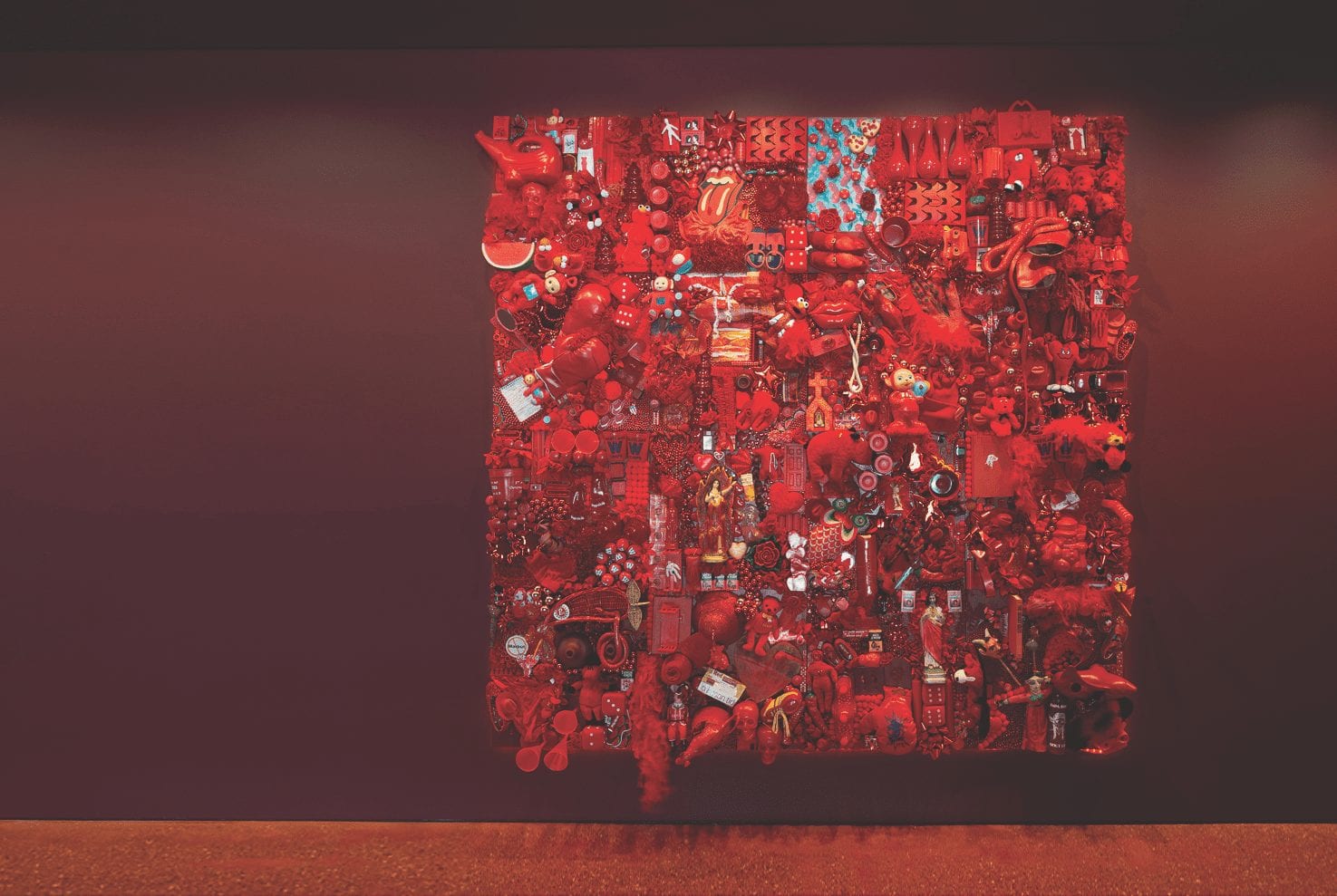Ruby City is a celestial gem box containing locally and globally renowned contemporary artists as well as the conviction and dreams of its late founder, Linda Pace.
Art was a staple in Linda Pace’s life, just as her family’s namesake Picante sauce is a staple in every San Antonian’s kitchen.
Pace was born in 1945 to David Earl Pace and Margaret Bosshardt Pace. Her parents had started a small pickle, jelly and Picante business. Linda later played a major role in developing the Pace Foods brand nationally and internationally.
Pace’s mother, who taught at both the San Antonio Art Institute and at San Antonio College, stoked her love of art by giving her and her friends art lessons in the family garage. Pace furthered her art education and married her childhood sweetheart, Christopher ‘Kit’ Goldsbury, in 1967. While rearing two children as her first husband maintained the family business, she completed a bachelor’s degree in art in 1980 from Trinity University.
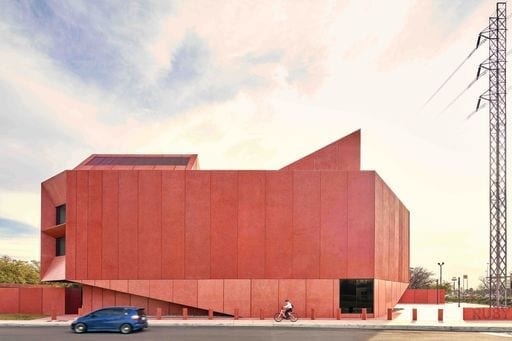
Ruby City was realized by famed architect Sir David Adjaye OBE, in conjunction with Alamo Architects, using only a colored pencil drawing by Linda Pace as their guide. © DROR BALDINGER. COURTESY OF RUBY CITY AND ADJAYE ASSOCIATES
Pace not only had an accomplished eye for art but also a dedicated hand for it as well. Her work has been included in the San Antonio Museum of Art, the Blue Star Contemporary Art Center, and exhibited in Texas and Colorado galleries. Pace’s visionary dedication has garnered numerous awards. She was the recipient of the Woman of Achievement Award from the San Antonio Museum of Art, the Contemporary Legends Award from the Dallas Center for Contemporary Art, the Ethel T. Drought Founders Award for Outstanding Contribution to the Arts from the San Antonio Art League and Ford Motor Company’s Salute to Education award for arts education.
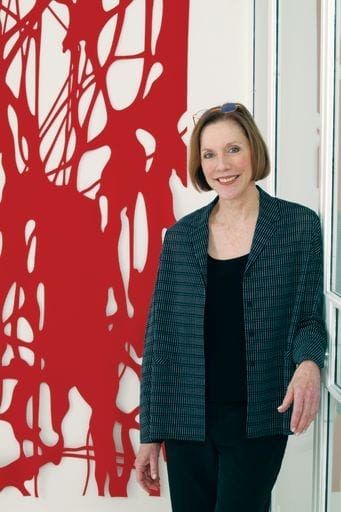
The late Linda Pace, founder, artist, collector and dreamer of Ruby City. Today, her legacy continues through the Linda Pace Foundation, which preserves, grows and exhibits her contemporary art collection at Ruby City and beyond. PHOTOGRAPH BY TODD JOHNSON
Pace shared her passion for art with her community. In 1993, she founded a nonprofit residency program, Artpace San Antonio, to support regional, national, and international artists to create art and bring global art practices and experiences to local communities.
Artpace has been home to eight MacArthur Fellows, seven Turner Prize nominees and 46 Whitney Biennial artists. Pace has described Artpace as a “laboratory of dreams—my own as well as the artists.”
Founded in 2003 on the conviction that contemporary art is essential to a dynamic society, the Linda Pace Foundation shares its collection with museums and institutions around the world. The foundation seeks out new works every year that explore the feminist perspective and engages in social issues while considering aspects of spirituality and beauty.
In her book, Dreaming Red, Pace said, “I had a hunger for contemporary art: for creating it, buying it, making it and, most of all, sharing it with others.”
Pace’s hunger for contemporary art, to both create and collect it, manifested itself in a dream as a crown of glittering reds and pinks. After experiencing the apparition in 2007, Pace captured the dream using a set of colored pencils and entrusted her vision to famed architect Sir David Adjaye OBE.
The dream was realized in October by Adjaye in conjunction with Alamo Architects. Born in Tanzania to Ghanaian parents, Adjaye’s revolutionary use of materials and sculptural aptitude established him as an architect with an artist’s vision that’s worthy of taking on Pace’s larger-than-life dream. He is known for his iconic design of the Smithsonian Institution’s National Museum of African American History and Culture in Washington, D.C., in 2016. Adjaye’s acclaimed projects have earned him a spot on Time Magazine’s 100 Most Influential list, and he was knighted by Queen Elizabeth II in 2017. His next project is spearheading Barack Obama’s presidential library in Chicago.
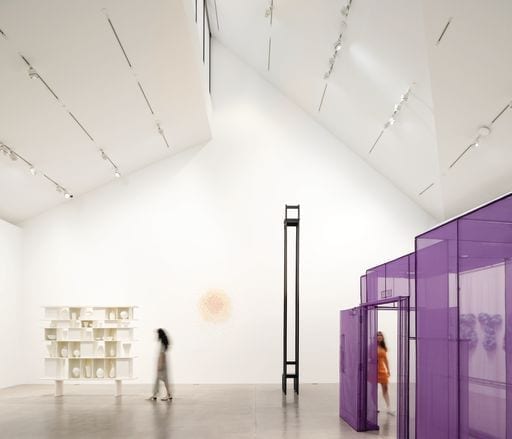
Ruby City is a dream manifested as part Spanish mission, part celestial gem case. The polished precast concrete, fabricated in Mexico City, is swathed in glass and mica aggregate set in the sparkling crimson of a dynamic desert sunset. At pedestrian level, the concrete is ground to a polished finish. Further up, the concrete edifice becomes sharp with the encrusted red-hued glass. The dynamic texture of the building parallels an angular crag sharpened to be a shining jewel.
Upon entering Ruby City, visitors are met with a red-sheathed interior entrance and lobby. They’re beckoned onwards and upwards through an ambulatory loop. The hexagonal dune exterior houses white-walled galleries burning with light from the pitched roof lights above. The cantilevered roof, with two crowning skylights, floods in Texas’ primary natural resource, a plethora of light and an endless swathe of blue sky. Two window lenses face Chris Park and San Pedro Creek, which carries a cultural epicenter for San Antonio’s vibrant downtown.
The 14,500-square-foot jewel box houses many gems of San Antonio’s thriving art scene and is home to the Linda Pace Foundation’s permanent collection and pieces by Pace herself. The 900 paintings, sculptures, installations, and video works from both San Antonian artists, such as Ethel Shipton and Cruz Ortiz, and international artists, such as Do Ho Suh, demonstrate Ruby City’s importance to the local and global art scene.
The inaugural exhibit Waking Dream is comprised of over 50 works that center on the ideals close to Pace’s own heart: the creative self, notions of home, vulnerability and resilience. The exhibit will be on view through 2022.
Ruby City’s adjacent sculpture garden greets visitors with large scale work by Nancy Rubins, 5,000 lbs. Of Sonny’s Airplane Parts, Linda’s Place, and 550 lbs. of Tire-Wire (1997), which was created especially for Pace by Rubins. The sculpture is structured of materials from a local aircraft supply. The work’s multidimensional industrial qualities encourage viewers to survey the piece from all directions. Visitors can also submerge themselves in Susan Philipsz’s ruminative sound installation, Sunset Song (2003), which elevates the sensory experience as visitors stroll through the garden.
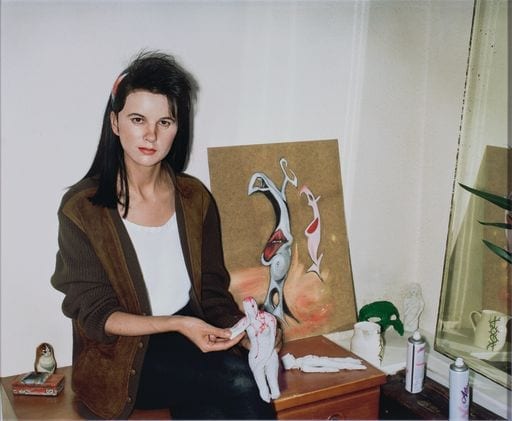
Gillian Wearing, Me as an Artist in 1984, 2014. C-print. 51 1/8 x 63 1/4 x 1 1/4 in.
Ruby City’s campus also includes Studio, an axillary exhibition space that houses special programs and curated shows, and a public garden, Chris Park. Chris Park opened in 2005 in memory of her son, who died in 1997. The one-acre public green space features a rhythmic layout of walkways, encounters with art and lush local and exotic flora. Contemporary artist Teresita Fernández designed the park to include a Starfield, embedded stars in the park’s path to replicate the constellations on the day of Chris’s birth. The museum received Wallpaper* Design’s Award for Best New Public Building in 2020, for the way innovative design can support local culture and communities. The other-worldly design shines a spotlight on the local culture and burgeoning art community that’s nestled inside and around the museum in San Antonio.
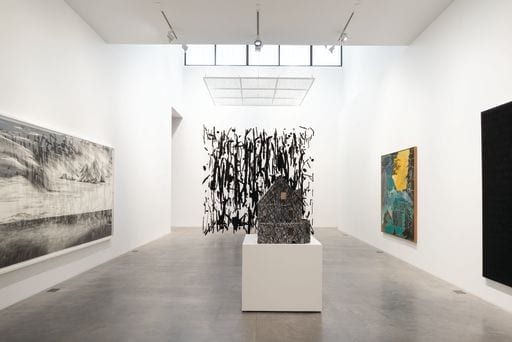
Kim Jones, Untitled, 1974 – 2013. © KIM JONES, COURTESY ZENO X GALLERY, ANTWERP, BELGIUM
With the art world’s eyes on Ruby City, the institution is already making moves to maintain itself as a contemporary art hub by bringing in known talent. Elyse A. Gonzales is Ruby City’s newly appointed director. Gonzales previously served as curator, assistant director and acting director at the University of California Santa Barbara’s Art, Design and Architecture Museum. Gonzales is excited to be able to shape Ruby City alongside her colleagues in the institution’s most formative years. The Texas native is returning home and is eager to take on the helm of Pace’s vision.
“Linda Pace . . . did a lot for contemporary art and artists both in the American Southwest and internationally. I think one of the most remarkable aspects of her legacy was . . . her mission as an advocate and philanthropist was focused on bringing the world to San Antonio and showing San Antonio to the world,” says Gonzales.
Gonzales is tasked to further Pace’s vision by mounting programs and exhibits that stem both from Pace’s own collection and reaching out to the local and global art world. Pace’s collection reflects her own daringness and reflects her own social consciousness.
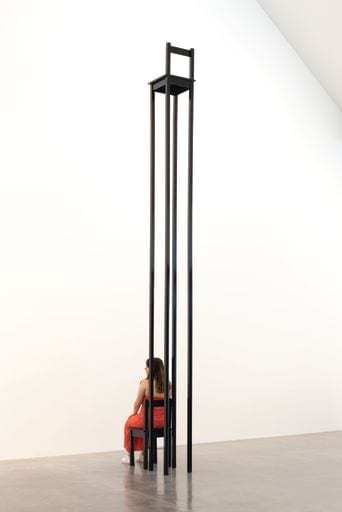
Installation view of Waking Dream, featuring Marina Abramovic, Chair for Man and His Spirit, 1993. Iron. 197 x 16 x 16 in. © MARINA ABRAMOVIC, COURTESY SEAN KELLY GALLERY, NEW YORK. PHOTOGRAPHY BY MARK MENJIVAR, COURTESY OF RUBY CITY, LINDA PACE FOUNDATION.
“She had the courage and vision to support and buy the artists in whom she believed . . . she made sure to collect underrepresented artists before it became an overarching initiative for art institutions,” says Gonzales. “I would also say that there is a spirit of generosity and community that informed all of Linda’s efforts.”
Editor’s Note: Ruby City is open Thursday through Sunday, free to the public.

